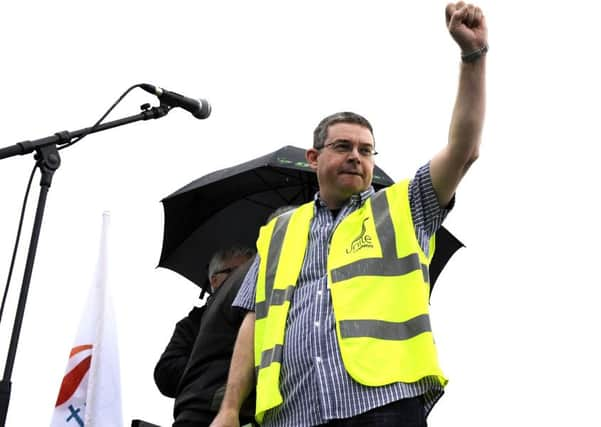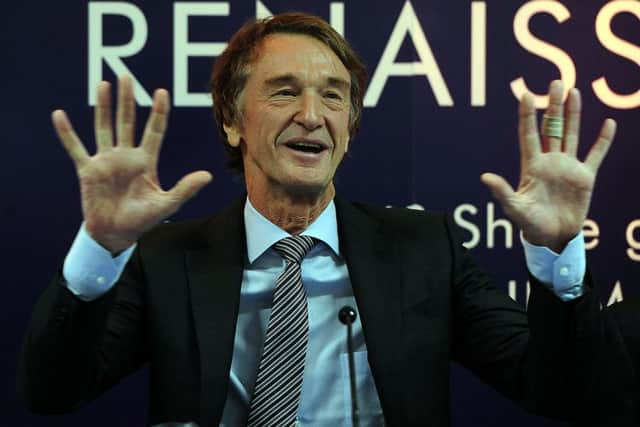Ineos union convener tells his story about '˜The Battle of Grangemouth'


The Grangemouth site will be back in the spotlight next week when a public meeting of Falkirk Council’s planning committee takes place at Grangemouth High School on Monday at 7pm to discuss the firm’s plans to permanently close off a public road.
However, the strong feelings which are sure to be on display about that section of Bo’ness Road pale in comparison to the vitriol and venom which surrounded Ineos back in 2013 when the very future of the Grangemouth site seemed to be at stake.
Advertisement
Hide AdAdvertisement
Hide AdA supposedly cash-strapped Ineos announced on Wednesday, October 23, 2013, the site was closing, stating liquidators were coming to the plant.


However, the site was saved when union Unite guaranteed to ban industrial action for three years and embrace the firm’s survival plan and the associated change to pensions, pay and conditions.
One of the key players in that epic struggle between the union and the owners has now written a book about his own experiences during that time.
Mark Lyon worked at the Grangemouth petrochemical site for over 20 years, first with BP and then with Ineos. He was the UK vice-president of Unite and the on-site union convener when the industrial action and shutdown crisis hit three and a half years ago.
Advertisement
Hide AdAdvertisement
Hide AdIn his book, The Battle of Grangemouth: A Worker’s Story, Mr Lyon states: “I consider that all the blame for the long-term damage that has been done to our factory, the community, and the Scottish and UK economy lies fairly and squarely with Jim Ratcliffe’s Ineos.


“It is lunacy to allow a single company – let alone an organisation effectively run by one man, with sole custody of decision-making – to control nationally important assets such as the Grangemouth complex.”
It is fair to say Jim Ratcliffe is portrayed as something akin to a Bond villain throughout Mr Lyon’s narrative, with references to his private yacht and Machiavellian plotting.
Mr Lyon reveals the billionaire founder of Ineos was not only aware of him, but had also taken an active dislike to him.
Advertisement
Hide AdAdvertisement
Hide Ad“I was warned by then Unite general secretaries Tony Woodley and Derek Simpson to watch my back, because during their meetings with Ratcliffe it had been made clear to them he hated me personally.”
Mr Lyons was sacked by Ineos in February 2014. He now works as an industrial organiser for the International Transport Workers’ Federation.
He writes: “The actions of these people were ultimately carried out because I was an obstacle to their agenda – which, when distilled right down, was the greedy pursuit of more money.
“If you threaten to shut a site down, as Ineos has done, the effects will last forever – or until you declare a complete and permanent reversal, admit your failings and apologise, and make the efforts to repair the damage you have done in order to rebuild confidence and goodwill among your employees.”
Advertisement
Hide AdAdvertisement
Hide AdJim Ratcliffe: Bond villain or saviour of Ineos in Grangemouth?
Ineos is now looking forward to a potentially bright future of importing US shale gas and possibly even fracking it on its own doorstep.
However, without the introduction of the firm’s survival plan in late 2013 and early 2014 this new direction for Ineos might not have been possible.
So is founder Jim Ratcliffe a hero for saving the supposedly under-threat site or is he an arch villain who has manipulated the Ineos workforce, the union and the Scottish and UK governments into giving him exactly what he wants?
Mark Lyon certainly feels Mr Ratcliffe is no saviour.
Advertisement
Hide AdAdvertisement
Hide AdHe claims he was given information on August 22, 2013, that showed Ineos had been putting plans in place for strike action for some time.
In his book he writes: “Ineos executed its plot against us (the union and workforce) in 2013 – the plot designed to attack our union and force the UK and Scottish governments to subsidise the site financially.
“A very important part of the plot was to portray the finances of the site in the worst possible light. This would then become the excuse both for exacting subsidies from government and for undermining wages and conditions.
“I realise now the company had decided not to do a sensible compromise deal with us on pension terms at that time because they preferred to force a strike on their terms in November 2013, when they could threaten us with the total closure of the site, with all the inevitable devastation to our people and the community of Grangemouth this would involve.
“The blame for what happened lies with Ratcliffe himself and his attitude and behaviour towards others. The majority of his managers lacked the necessary courage to challenge him.”